Thermal Expansion Formulas
Thermal Expansion is the tendency of an object to change its dimension either in length, volume, or area due to heat. To help you get a good grip on the concept we have listed the Thermal Expansion Formulas all in one place. Avail them during your preparation and enhance your subject expertise. Cheat Sheet on thermal Expansion covers the topics like Differential Expansion of Two Solid Rods, Radius of Bimetallic Strip, Anomalous Expansion of Water, etc. For any other help regarding the related topics use our Physics Formulasand get proper assistance to understand the concepts.
Important Thermal Expansion Formulae & Tables
1. Expansion of solid
(i) Linear Expansion: –
If α is the coefficient of linear expansion at t1°C.
l1 = length of the rod at t1°C
l2 = length of the rod at t2°C
l2 = l1[1 + α(t2 – t1)]
t may be in any unit °C or °K because in the formula there is a difference of temperature which remains same for °C or °K.
If length of the rod is l0 at 0°C and l1 at t°C than
l1 = l0 [1 + α (t – 0)]
lt = l0(1 + αt)
where α is temperature coefficient of linear expansion at 0°C. Here t should be in °C only because initial temperature is taken as 0°C.
(ii) Superficial Expansion: –
At = A0 (1 + βt) ; β = 2α
(iii) Cubical Expansion: –
Vt = V0(1 + γt) ; γ = 3α
Note: – If αx, αy and αz are the linear coefficients of expansion in x, y and z direction then volume expansion = αx + αy + αz
coefficient of linear expansion = \(\frac{\alpha_{x}+\alpha_{y}+\alpha_{z}}{3}\)
2. Differential expansion of two solid rods
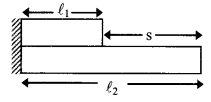
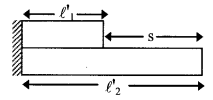
l1‘ = l1 [1 + α1 (t2 – t1)]
l2‘ = l2 [1 + α1 (t2 – t1)]
if s = s’ then α2 l2 = α1l1
3. Radius of bimetallic strip
R = \(\frac{t}{\left(\alpha_{1}-\alpha_{2}\right)\left(t_{2}-t_{1}\right)}\)
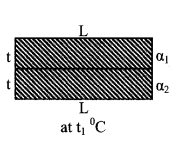
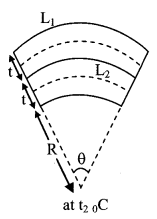
For a bimetallic strip on heating, the metal on convex side is one having higher coefficient of thermal expansion
4. Expansion of liquids
As liquids are contained in a vessel and so due to heating both expands. We define two types of volume expansion in case of liquids.
(a) Real Expansion (γr) – It is the actual increase in volume of liquid per unit volume per degree change in temperature.
(b) Apparent Expansion (γa) – It is defined as apparent change in volume of liquid per unit volume per degree change in temperature. Further,
γr = γr + γg ; γg : volume expansion of glass
5. Anomalous expansion of water
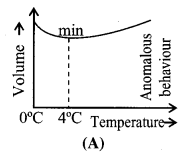
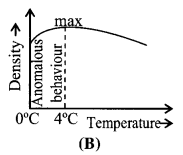
Water has typical behavior. It contracts, when heated from 0°C to 4°C and expands on further heating. It has maximum density at 4°C. So, in cold countries, lake starts freezing, while in the bottom water is available at 4°C.
6. Variation in density of liquid with temperature
dr = d0(1 – γt), where dt : density at t°C & d0 : density at 0°C and γ : coefficient of cubical expansion of liquid.
7. Expansion of gases
The expansion of gases is much more than solids and liquids and all gases expand equally unlike solids and liquids.
For gases,
Vt = V0(1 + αt)
where α = \(\frac{1}{273}\) : coefficient of volume expansion of gas.
In case volume of the gas is kept constant, then due to rise in temperature, there is increase in pressure.
So, Pt = P0(1 + βt)
β = \(\frac{1}{273}\) : coefficient of pressure expansion of gas.
Looking for help on other Physics Concepts have a look at our site Onlinecalculator.guru a trusted resource for all your queries.